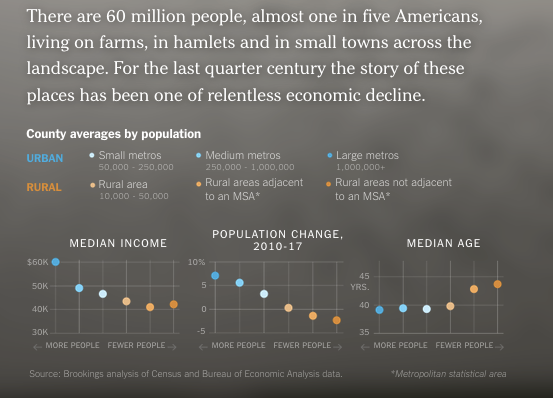Rural America is getting old. The median age is 43, seven years older than city dwellers. Its productivity, defined as output per worker, is lower than urban America’s. Its families have lower incomes. And its share of the population is shrinking: the United States has grown by 75 million people since 1990, but this has mostly occurred in cities and suburbs. Rural areas have lost some 3 million people. Since the 1990s, problems such as crime and opioid abuse, once associated with urban areas, are increasingly rural phenomena.
Rural communities once captured a greater share of the nation’s prosperity. Jobs and wages in small town America played catch-up with big cities until the mid 1980s. During the economic recovery of 1992 to 1996, 135,000 new businesses were started in small counties, a third of the nation’s total. Employment in small counties shot up by 2.5 million, or 16 percent, twice the pace experienced in counties with million-plus populations.
These days, economic growth bypasses rural economies. In the first four years of the recovery after the 2008 recession, counties with fewer than 100,000 people lost 17,500 businesses, according to the Economic Innovation Group. By contrast, counties with more than 1 million residents added, altogether, 99,000 firms. By 2017, the largest metropolitan areas had almost 10 percent more jobs than they did at the start of the financial crisis. Rural areas still had fewer.
The Economic Innovation Group measures “distress” as a combination of data ranging from joblessness and poverty to abandoned homes and educational attainment. Since the 1990s, there has been an “intensifying ruralization of distress,” said John Lettieri, the group’s president.




